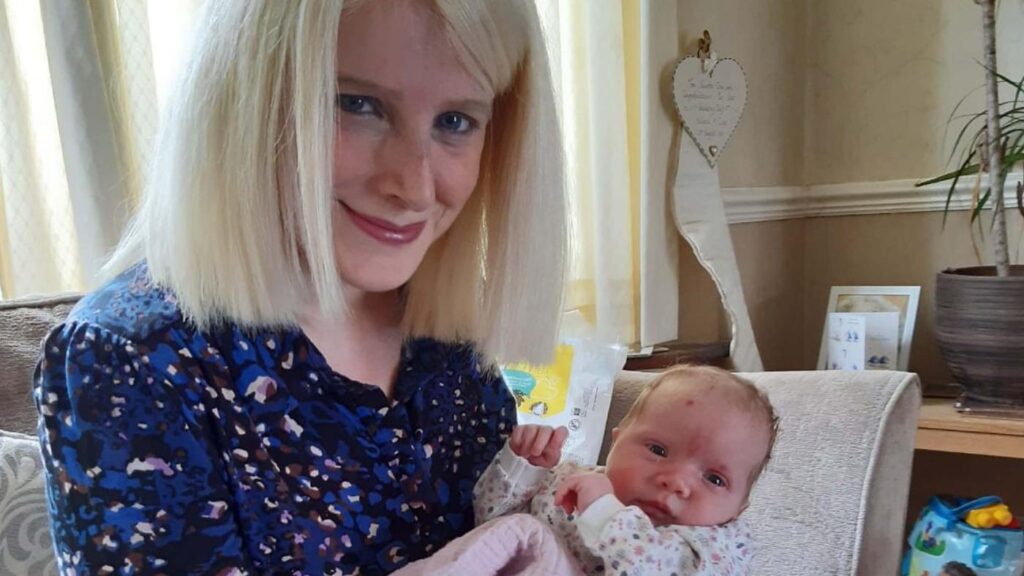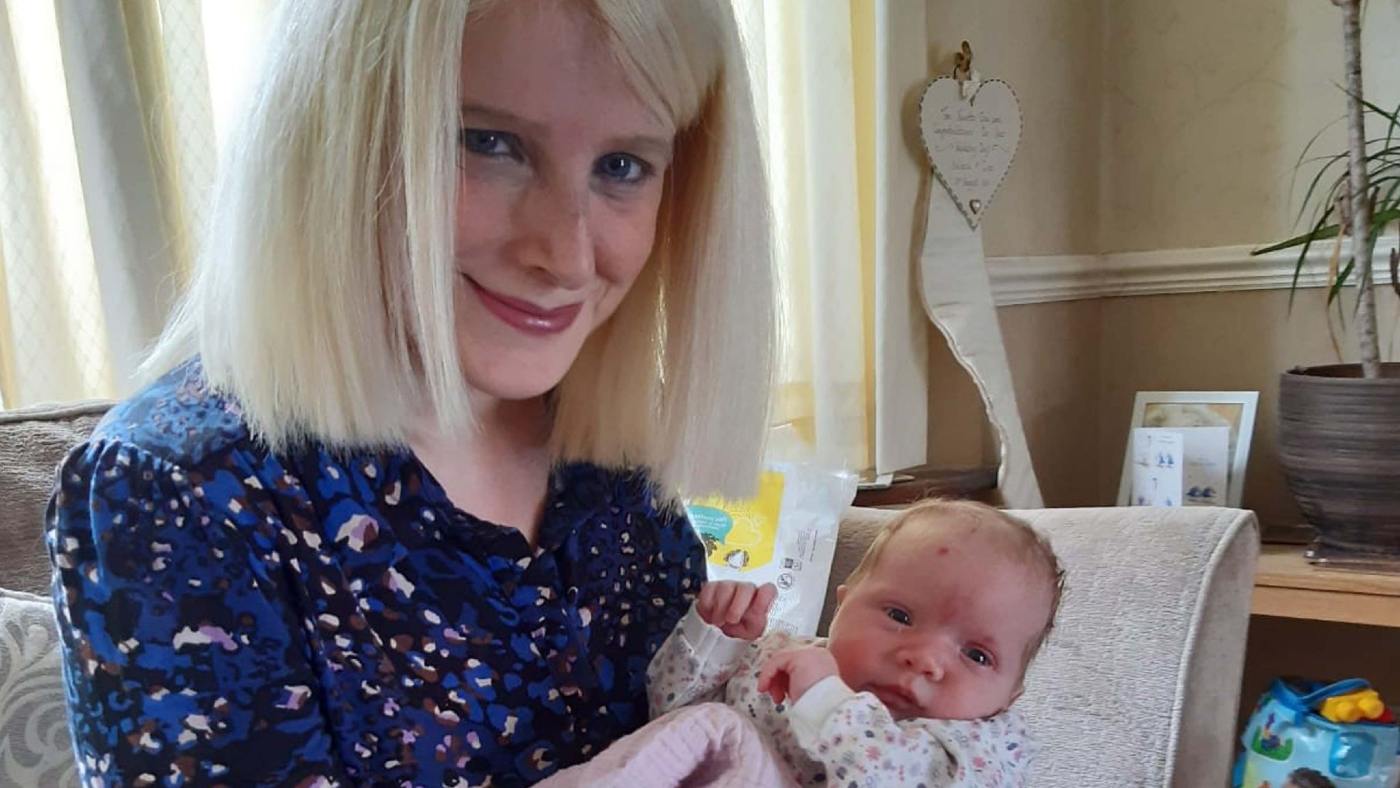For an unborn child, spina bifida, a birth defect in which the spinal cord fails to develop or close properly, is a devastating diagnosis. Until recently, doctors were unable to attempt to correct the condition until after the baby was born. Even with post-partum medical intervention, the outcome wasn’t always good.
Now, however, thanks to some stunning advances in prenatal surgery, operations performed in utero are delivering much more promising results.
Doctors theorize the longer spinal tissue is left exposed to amniotic fluid in the womb, the greater the damage to the nerves, which can lead to permanent paralysis of the legs, loss of sensation, and lack of function in the kidney, bladder, and bowels.
Corrective procedures performed during the second trimester (usually between 23 to 26 weeks) are reported to minimize nerve damage and mitigate long-term health issues, giving many spina bifida babies the hope of leading close to normal lives.
Helena Purcell, a mom-to-be in the U.K., learned her unborn daughter had spina bifida as well as hydrocephalus (an abnormal build-up of fluid in the brain) during a routine 20-week scan. Half the baby’s spine was exposed by a large lesion. She was told the chances her child would ever walk were slim and she’d likely be incontinent her entire life.
Within days of hearing that bleak prognosis, Helena was tested by the National Health Service (NHS) to see if she qualified for their life-changing in utero surgery program—and was approved. “I knew if I didn’t get the operation the quality of her life would be very different,” Purcell told the BBC.
Purcell was 23 weeks into her pregnancy when she arrived in Belgium where the surgery was to be performed. Close to 30 specialists and clinicians from the University College London Hospitals, Great Ormond Street Hospital for Children, and the University Hospitals Leuven took part in the procedure.
MORE: First Neonatal Wearable Could Provide Real-time Detection of Jaundice and Vital Signs
The team included fetal and pediatric surgeons, neurosurgeons, anesthesiologists, obstetricians, radiologists, and a scrub team. There were even neonatologists on hand in the event Purcell’s baby needed to be delivered (which she did not).
Three months later, Helena’s daughter Mila (short for Milagro which means “miracle” in Spanish) was born. While she still has some fluid retention in the brain, her development is otherwise good.
“I cannot explain the massive difference [this] has had for my family. The NHS doctors are heroes in my eyes, and the surgery they did is just mind-blowing,” Purcell told Sky News. “If it wasn’t for them then Mila would be paralyzed… I am just so grateful that she has had this chance.”

Pre-Born in the U.S.A.
The NHS reports that since January 2020, 32 British babies and their mums have undergone the dual surgical procedure, but the operation is being successfully performed in America as well.
A 20-week ultrasound revealed Mallorie and Chris Deruyter’s son, Max, had spina bifida. The Wisconsin couple’s doctors sent Mallorie to Lurie Children’s Hospital of Chicago for further treatment.
While the operation—known as “closed fetoscopic repair”—is much less invasive than earlier procedures, Mallorie still ran a risk for the premature delivery the surgery sometimes induces.
“When I initially heard that, I actually thought there’s no way I’m going to have surgery. I just thought it was absolutely crazy,” Mallorie told WGN News 9. “And then the more research I did the more I realized this is going to give him the best life.”
After the seven-hour operation, helmed by Fetal neurosurgeon Dr. Robin Bowman and pediatric surgeon Dr. Aimen Shaaban, mother and the unborn baby were doing well. The Deruyters went home to Green Bay but were set to return to Lurie for a C-section when the pregnancy reached 39 weeks.
The baby had other plans. Mallorie went into labor and Max arrived at 3 a.m. just hours before the scheduled C-section, with no complications.
RELATED: Research Shows Babies Are Relaxed By Lullabies Even in Foreign Languages: The Frère Jacques Response
Back home, Max is thriving. “The chance of a really normal life for him really looks apparent,” Chris told WGN. “You can see he’s going to be a thriving, happy young little boy. I don’t think we would have done it any other way.”
3D Printing Brings a New Level of Accuracy
Meanwhile in Florida, along with MRIs and ultrasounds, surgeons are using pioneering 3D printed “virtual” babies as tools to better guide them through the complex procedure.
Orlando Health Winnie Palmer Hospital for Women and Babies in Florida is one of the state-of-the-art facilities employing the new technology. Working in conjunction with Orlando-based Digital Anatomy Simulations for Healthcare (DASH), 25 fetal models have been created since 2018.
“The 3D reconstruction of the fetus can really educate the surgeon on the real-life shape, size, and location of the spinal lesion, as well as prepare the surgeon to have the appropriate equipment ready to treat this condition surgically,” Dr. Samer Elbabaa, Orlando Health’s medical director of pediatric neurosurgery said in a statement.
“It’s a level of detail that we are not able to see in traditional imaging, but that is extremely valuable in these cases where we cannot actually see the defect ahead of surgery.”
“The fetal models not only help surgeons plan for things like where to make an incision and how to repair the defect but also help reduce the duration of the surgery to limit the developing baby’s exposure,” DASH CEO Jack Stubbs stated.
READ: This Blind Mom Got To ‘See’ Her Adorable Unborn Baby Thanks to a 3D-Printed Ultrasound
Jocelyn Rodriguez, a patient at Winnie Palmer found out the baby she and her husband Jared were expecting had spina bifida when she was 18 weeks along. The couple says the 3D technology allowed them to better understand what was going on with the pregnancy, and also feel more positive about moving forward with the procedure.
While Jocelyn hasn’t reached her due date, subsequent checkups since the surgery reveal the baby’s condition has vastly improved.
“She has been kicking, wiggling her toes, moving her ankles,” she said. “She loves to have hiccups. I mean, just everything that we could have wished for has definitely happened.”
SHARE This Exciting Breakthrough With Friends on Social Media…




















